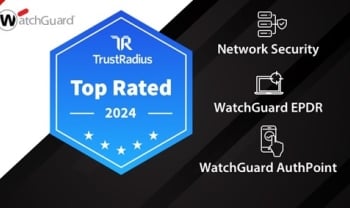What you need to do to elevate your data protection

Data theft is a growing concern for companies and users alike. More and more attacks are being launched with the aim of gaining access to third-party data, and the number of people affected is on the rise.
The unease organizations are experiencing over these threats is backed by the statistics. According to one report, 422 million people were victims of data theft in 2022. This has led to concerns about how hackers can take advantage of small security breaches to gain access to sensitive information by carrying out “homemade” or simple attacks – and at little cost.
A case in point is the incident when a researcher managed to break BitLocker encryption, Microsoft's data encryption application. In a YouTube video, he disclosed how he decrypted the tool in less than a minute. If it had been a real cyberattack, a hacker would have accessed the device's confidential data without the need for a password or recovery key. All this for just five dollars.
The researcher took advantage of the fact that communication between the Trusted Platform Module (TPM) and the processor is not encrypted and accessed the device's decryption key housed in the TPM. In this instance, BitLocker was not configured to request a password to access the device and this configuration error allowed the data to be decrypted.
This shows that a small vulnerability coupled with an unrestrictive configuration is all it takes to leave access to all the data on a computer wide open, which highlights the need for additional solutions such as encryption, as well as correct configuration, to act as safeguards against unauthorized users.
Benefits of data encryption solutions
For many organizations, data protection is a priority and, as such, they need to invest in measures to shield sensitive information.
Data encryption is the first line of defense against unauthorized data access, hence many security frameworks include encryption as a fundamental component in the protection of confidential information (ISO 27001, NIST Cybersecurity Framework, GDPR, PCI DSS, HIPAA, etc.). Encryption is one of the factors that has the greatest impact on reducing the costs associated with a data breach. It effectively provides another layer of protection that complements default solutions that may be insufficient.
How to elevate the protection of sensitive information
Apart from data encryption, other complementary measures are key to safeguarding data. We share some of the ways you can enhance your security system and achieve comprehensive data protection below:
-
Update software regularly:
If you want to prevent security breaches caused by exploiting vulnerable software, it is important to keep all your systems up to date and apply patches regularly. This prevents the system from becoming obsolete and closes potential entry points for hackers.
-
Make backup copies:
Backing up different storage systems and networks on a regular basis is one of the main methods to mitigate the consequences of data theft. Even if your company falls victim to an attack, it is possible to prevent permanent data loss or extortion.
-
Rely on an external partner:
Many businesses, especially small and midsize enterprises, do not have the capacity to employ their own cybersecurity team to ensure the correct configuration and proper functioning of solutions. Relying on the services of an MSP specialized in cybersecurity helps prevent breaches or configuration errors in your cybersecurity system.
Businesses and users need to be aware of the need for a comprehensive protection system that, on the one hand, encrypts sensitive data and, on the other, blocks potential security breaches and prevents intrusion by malicious actors. Taking these steps can make all the difference when it comes to dealing with cyber threats.
If you would like to learn more about data protection, check out the following posts on our blog:
- World Backup Day: How and why to make backup copies
- Data Privacy Dilemma: How to Address Growing Concerns in an Extremely Online World
- AnyDesk Case: What steps should users take to protect themselves?






